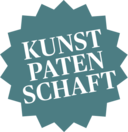Gewehr: Radschlossbüchse
datiert 1733, Owner: Kaiser Karl VI. Sohn des Leopold I. von Habsburg Österreich
Radschlossbüchse
In 1733, Elisabeth Christine of Brunswick-Wolfenbüttel presented her husband, Emperor Charles VI, with this gun. It was produced by Johann Sebastian Hauschka, the court gunsmith of Elisabeth’s father, Louis Rudolph, Duke of Brunswick-Wolfenbüttel. Hauschka signed and dated his work on the pan lid: S Hauschka 1733.
Barrel and lock are elaborately decorated in cut iron with damascene work in gold and silver. On the barrel is Diana, ancient goddess of the chase, with her hounds; on the lockplate, a deer hunt with a pack of dogs.
The gun’s stock, fashioned in the French manner, is made of walnut and decorated with bas-reliefs depicting mainly garlands. The lock side of the butt shows Diana in her chariot, carved in wood; the side opposite the lock has a double-headed imperial eagle inlaid in mother-of-pearl. Emblazoned on the eagle’s chest are the arms of Charles VI, which comprise the arms of Austria and Castile; the latter is a reference to his claims to the Spanish crown, which he never relinquished. The gilt brass ornaments also depict hunting scenes, especially on the side opposite the lock, which features a virtuoso rendering of a boar hunt. The cartouche-shaped escutcheon plate is decorated with the intertwined letters CE (Charles and Elisabeth), framed by the imperial crown and the Golden Fleece. The central part of the escutcheon plate can be opened at the touch of a button to reveal a miniature portrait of Elisabeth Christine in tempera on paper (executed on the back of part of a playing card), protected by a small pane of Muscovy glass.
In the inventory of the imperial gun room (Kaiserliche Hofgewehrkammer, inventory begun in 1868) the weapon is listed as no. 64: ‘A rifle with a German lock /: by Hauschka in 1733:/ with a hidden portrait under the lid inscribed with E.C. … the whole an exquisite work from the 1st half of the 18th century’ (Ein Kugelstutzen mit deutschem Schloße /: von Hauscka ac 1733 :/ mit einem verborgenen Portrait unter dem mit E.C. bezeichneten Schilde […] Das Ganze eine herliche Arbeit aus der 1t. Hälfte des 18t. Jahrhunderts).
Object data
Object Name
Gewehr
Culture
Wolfenbüttel
Dated
datiert 1733
Owner
Kaiser Karl VI. Sohn des Leopold I. von Habsburg Österreich (1685 - 1740) - GND
Artist
Johann Sebastian Hauschka , (Büchsenmacher) (1695-1775) - GND
Material
Lauf: Eisen, gezogen, damasziert, teils geschnitten, teils mit Gold tauschiert. Visier: Messing, getrieben, feuervergoldet. Korn: Silber. Schlossplatte, Radabdeckung: Eisen, teils geschnitten, teils feuervergoldet. Hahn, sonstige Schlossteile: Eisen, teils gegossen, teils geschnitten. Schlossgegenplatte: Messing, teils getrieben, teils ziseliert. Schrauben: Eisen, teils gebläut. Daumenplatte, Kolbenblech: Messing, teils gegossen, teils ziseliert, teils graviert, feuervergoldet. Temperamalerei auf Papier. Glimmer. Schaft: Holz, teils geschnitzt. Perlmutteinlegearbeit, teils graviert.
Dimensions
L 111 cm × H 20,5 cm × T 13,5 cm
Gewicht: 4,00 kg
Signed
Feuerschirm: S. Hauschka 1733, Kolbenanschlag: Doppeladler in Perlmutter, Daumenplättchen: C.E.
Markings
Johann Sebastian Hauschka
Image rights
Kunsthistorisches Museum Wien, Hofjagd- und Rüstkammer
Inv. No.
Hofjagd- und Rüstkammer, D 171
Permalink (citable Link) to this page: www.khm.at/it/object/373900/
Kunst & Patenschaft
This object is still without a Art Patron. Accept the patronage and make sure that this cultural treasure is preserved for future generations.
Your donation is a direct and sustainable contribution to the scientific documentation, research, restoration, and presentation of the artworks of the Kunsthistorisches Museum Wien.

